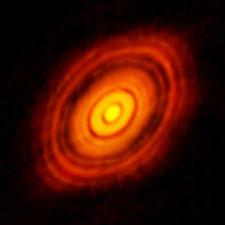About This Course
This course introduces students to the exoplanets and life in the Universe.
Intended Student
This course will be of interest to those who want to broaden their understanding about life in the Universe. This course is suitable for the science or non-science student who is familiar with first-year physics and second-year mathematics or statistics.
Course Requirements
The requirements for this course (the basis for your course grade) are:
- Five graded assignments, 40% (best four count)
- Midterm exam, 20%
- Final exam, 40%
Topics:
- The Universal Context for Life
- What is Life?
- Suns: Energy for Life
- Stars: Forges for Life
- Carbon and Water: Materials for Life
- Planets: Habitats for Life
- Assignment Completed
- Our Planetary System
- The Formation of Stars
- History of Solar System Formation
- The Early Solar System
- The Early Earth
- Comparative Planetology
- Life on Earth
- History of Life on Earth
- Chemical Evolution of Life
- Climate
- Mass Extinctions
- Extremophiles
- Exoplanets: Discoveries
- Telescopes
- Taking the Measure of Stars
- Passive Planets: Transits and Microlensing
- Active Planets: Astrometry and Radial Velocity
- Finding Hidden Planets
- Exoplanets: Details
- Exoplanet Demographics
- Host Stars
- Stellar System Architectures
- Stellar System Evolution
- Habitability in the Universe
Edge.EdX.Org
We are hosting this course on Edge.EdX.Org, a comphensive platform for learning online. You will interact with your fellow students, teaching assistants and the instructor through the Edge discussion forums. You can also arrange in-person meetings with the course personnel and video conference meetings too.
You will log onto edge.edx.org using your UBC CWL by clicking the register button above.
edge.edx.org is hosted on servers in the US. When you login with your CWL, UBC does not share any traceable data about you with edX. However, edX does require you to create an account on their servers. While edX maintains its own privacy policies, since UBC cannot guarantee security of your private details on US servers, it is permissible to use a pseudonym to protect your privacy if you have concerns.
Prerequisites
Familiarity of physics at the first-year level: PHYS 101, PHYS 102, PHYS 107, PHYS 108, PHYS 117, PHYS 118, PHYS 153, PHYS 157, PHYS 158, SCIE 001
Familiarity of math or statistics at the second-year level: MATH 200, MATH 253, STAT 200, STAT 203, STAT 241, BIOL 300, COMM 291, ECON 325, EPSE 482, EPSE 483, FRST 231, GEOG 374, KIN 371, POLI 380, PSYC 218, PSYC 366, SOCI 328.
Course Staff
Jeremy Heyl
Jeremy is a professor at the University of British Columbia. His recent research has focussed on compact objects: white dwarfs, neutron stars and black holes. These are the most extreme objects in the universe. Astrophysicists think that they provide the power behind quasars and gamma-ray bursts, the brightest objects in the recent universe.
His team discovered that stars like the Sun lose much of their mass in the final million years of nuclear burning, not gradually over a billion years as previously thought. He discovered waves in the oceans of neutron stars (yes, neutron stars have oceans) and the fate of our Galaxy after it collides with the Andromeda galaxy). Hint: there will be no Milky Way after that happens!
Frequently Asked Questions
What web browser should I use?
The Open edX platform works best with current versions of Chrome, Edge, Firefox, Internet Explorer, or Safari.
See our list of supported browsers for the most up-to-date information.
Do I need to get a textbook?
No, we are using several textbooks that are available online through the UBC library.
How does the course work?
The course is divided in five modules. In each module there are several lessons. Each lesson has a reading assignment with key questions and learning goals, lecture notes, and sometimes activities to reinforce your learning and videos. Within each module there is a graded assignment. In the middle of the course, there will be a midterm, and at the end there will be a final exam that covers the course from the beginning to the end.

